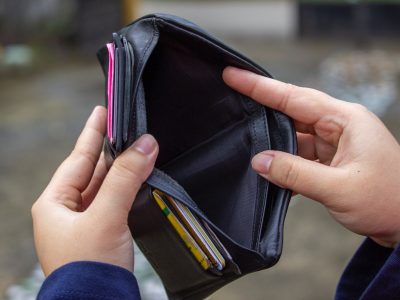Ruth Moss, a 51-year-old nurse in the U.K., believes her daughter Sophie Parkinson would still be alive if she hadn’t been exposed to self-harm content online. Parkinson took her own life at the age of 13 at her home in 2014 after viewing suicidal posts on social media. Moss said she did everything she could to protect her daughter from inappropriate content, and now she wants to hold social media companies responsible for negligence.
Moss gave her daughter a cell phone when she was 12 years old to give her some independence and monitored her viewing habits when she was at home.
“We did all the parental controls on the phone, we locked down our Wi-Fi at home, we did everything we could to be responsible. But she was still able to access harmful material when she had access to free Wi-Fi, on the bus to school or at cafes,” Moss explained.
“When I went on her phone after she died, I was met with the most harmful stuff, it was shocking. She had gotten around the age verification to set up a social media profile, which I think a lot of children do.”
After Sophie’s death, many people were quick to judge Moss for giving her daughter a phone at such a young age. “I faced a lot of parent shaming after Sophie died, people asking why I would give a phone to my 12-year-old child. But we did all the things any responsible parent could do, and I was much stricter than I think a lot of parents are,” she added.
“Parent shaming is so unhelpful; we are all just trying to do our best. You can be the most responsible parent in the world, but you are still never a hundred percent certain what your child can get access to, which is the really scary part.”
Moss has started campaigning for the Online Safety Bill in the U.K., which would require social media platforms to remove inappropriate content. But she would also like to see the owners of these companies face jail time if they fail to protect children from harmful videos and images.
Apps like Twitter, Facebook, Instagram, and TikTok have content moderation guidelines to prevent the spread of this kind of material, but a lot of videos featuring violence and self-harm still slip through the cracks.
“After Sophie died it was like me against the tech. Social media companies are very good at getting around legislation,” Moss insisted. “They will make voluntary agreements with the government pledging to do one thing or another, but it just doesn’t happen. We have stringent health and safety in all other areas of work but not within these billion-pound tech companies, there is no accountability.”
She blames the algorithms on these platforms for suggesting similar content to users once they search for a particular term, which she believes trapped her daughter in a vicious loop of damaging content.
“Once you search something, you are bombarded with similar stuff, whether that’s looking up shoes and seeing hundreds of other ads pop up or self-harm,” she added. “These algorithms are so powerful.”
Social media overuse has been linked to higher rates of suicide ideation among teenagers. According to the CDC, the rate of teen suicides increased over 30% between 2007 and 2015, which coincides with the increasing rate of social media use among this age group.
The Pew Research Center found that the risk of suicidal ideation among teenagers coincides with how often they are using these platforms as well as what kinds of content they are viewing. Teens who use social media at least two hours a day see a greater decline in mental health compared to those who use these apps for less than two hours a day. However, teens who post about themselves tend to have a higher risk than those who use social media for entertainment purposes.
Parents in the U.S. and U.K. have started filing viable lawsuits against Meta, the company that owns Facebook and Instagram, because they feel these apps induced, encouraged or enabled their children to commit suicide.
If you or someone you know is experiencing thoughts of suicide, call 800-273-8255 to reach the National Suicide Prevention Lifeline 24/7/365. This hotline gives you someone to talk to and can connect you with local mental health professionals.

















